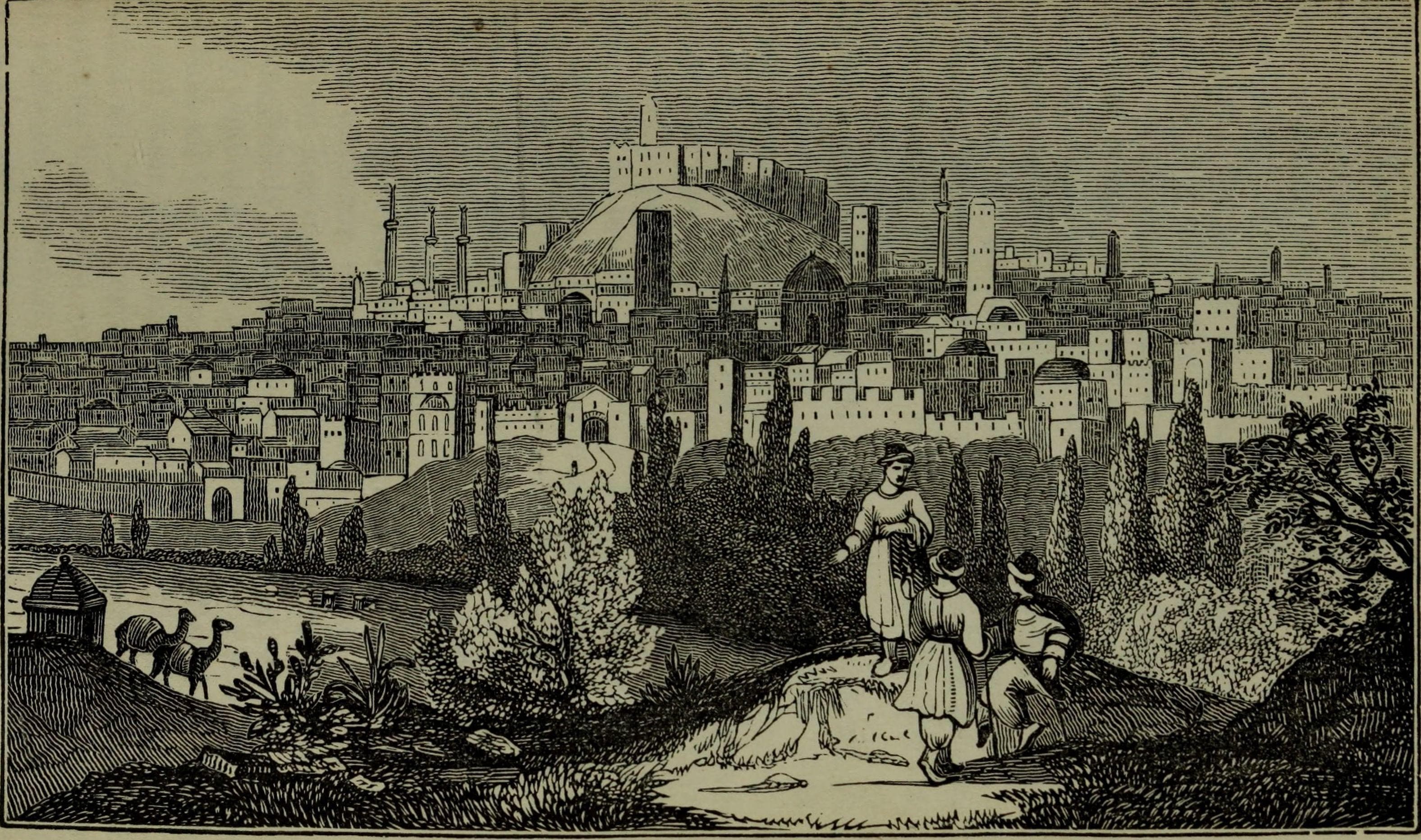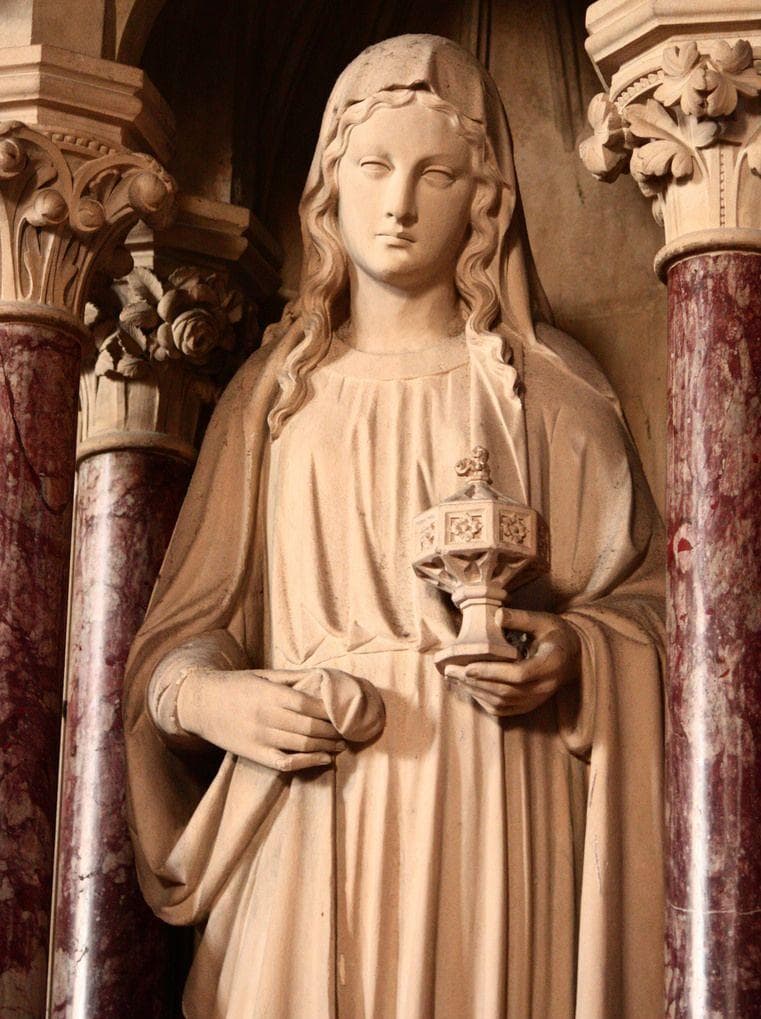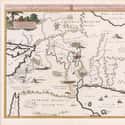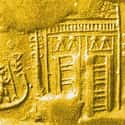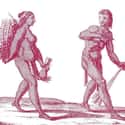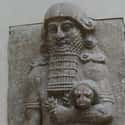-
(#1) Four Ancient Rivers Led Scholars to Eden's Geographical Location
According to the Genesis, the Garden of Eden was located at the head of one major river that then divided into four rivers to water the garden: the Pishon, Gihon, Tigris, and Euphrates. Because Eden was described at the "head" of this biblical river system, many scholars placed Eden in the mountains of Turkey where the Tigris and Euphrates originate. However, in ancient Hebrew, "head" didn't mean the beginning of a river, but where it intersected with other bodies of water - this would imply that the heads of the four rivers were all in the Persian Gulf.
The Tigris and Euphrates are easy to identify because they still exist, but there's much debate about the biblical Gihon and Pishon rivers. Many scholars have argued that the Gihon was the Nile and the Pishon the Ganges, but at no point in geological history have these four major rivers intersected. A more likely scenario is that the Gihon River corresponds with the Karun River in Iran, and the Pishon River with the Wadi Batin river system (now dry) that once drained from the fertile central area of the Arabian Peninsula into the Persian Gulf. These four ancient rivers place Eden at the top of the Persian Gulf in the area of the Mesopotamian Marshes.
-
(#2) It Appears The Ubaidians Were The First To Settle The Persian Gulf
In the past few years, the remains of 60 7,500 year-old settlements from the Ubaid Period have turned up around the edge of the Persian Gulf. These sites hold the ruins of well-built, permanent stone houses, evidence of long-distance trade networks, elaborately decorated pottery, domesticated animals, and wood from one of the oldest boats in the world.
What's strange about these advanced settlements is that unlike nearby sites in Yemen and Oman, archeologists haven't found any stone tools that identify preceding Paleolithic settlements in the area. It seems unlikely that the Ubaidians, who were more technologically advanced than people in the Nile River Valley at that time, appeared out of nowhere.
-
(#3) The Stone Tools Of Eden's Hunter-Gatherers Are Now Buried Beneath The Gulf Waters
A new theory gaining momentum is that the usual evidence of Paleolithic settlements that predate the Ubaidians, such as stone tools, are missing because they're underwater. Until 8,000 years ago, a landmass the size of Britain existed within the Persian Gulf. This mass was fed by four rivers and a network of underground springs, making it a lush paradise that was able to support a population of hunter-gatherers. These people, who had traveled up from Africa as far back as 100,000 BCE, sought refuge in the lush Persian Gulf Oasis during an Ice Age that reduced the surrounding lands to vast deserts.
-
(#4) The First People To Gather Seeds And Start Farming Were Women
One way to read Genesis is as a male allegory based on the experiences of the earliest human societies when men brought meat home from the hunt and women were responsible for gathering plant food. Everything went awry 10,000 years ago when women started gathering seeds and developed the practice of intentional food production.
Women saw the benefit of bringing the food to them instead of searching for it, and began to stockpile grains for periods of drought when food was scarce. This way, with more available throughout the seasons, population increased. For the first time, people could stay in one place by producing all the grains and meat they needed.
This transition meant that men, as the hunters, needed job retraining. This shift is supported by numerous myths in cultures ranging from Native American to African to Greek where harvest goddesses must teach men how to grow food.
-
(#5) Two Competing Neolithic Gangs Occupied The Persian Gulf Oasis At The Same Time
An anthropological way to look at the The Garden of Eden story is as a tale of tension between two groups who clashed in the area of the Persian Gulf Oasis sometime between 6000 and 5000 BCE. The first group were the nomadic hunter-gatherers, Adam and Eve types, who were heirs to God's natural bounty. The hunter-gatherers moved in and out of the gulf region depending on weather conditions which determined available food. The second group, the Ubaidians, were more technologically advanced so they could stay in one place and form large settlements.
The problem for the hunter-gatherers is that with increased populations from agriculture, foraging for food got more difficult. After starving for a while, some of the hunter-gatherers defected to the Ubaidian group, took up farming, and almost disappeared except for one thing: their stories of a simpler, more innocent time stayed with the combined group. These same stories were passed down until they were recorded on tablets by the clever Sumerians. Perhaps the appeal of the hunter-gatherers' stories was their innocence; the lost days when man lived a life of ease in a lush garden of the gods which provided him with everything he needed.
-
(#6) Utnapishtim's Story Of Building An Ark to Escape The Flood Predates Noah's by 700 Years
In the Epic of Gilgamesh, the hero comes across an old man, Utnapishtim, who tells Gilgamesh a story of how the god Ea instructed him to build an enormous boat to save himself, his family, and "the seed of all living things." Utnapishtim does as Ea instructs and the gods create rains that last for several days causing a great flood. When the rains subside, Utnapishtim's boat lands on a mountain and he sets loose first a dove, then a swallow, and finally a raven, which all find dry land. This story certainly predates any knowledge or records we have of Noah's ark as set down in Hebrew culture.
-
(#7) The Biblical Flood Probably Happened - And Destroyed Eden In The Process
Between 18,000 and about 6000 years ago, as the Ice Age wound to an end, most of the ice melted off of Canada and Scandinavia. This caused the sea level to rise all over the world and there's evidence at the Bosphorus that 8,000 years ago, a massive deluge of water poured into the Black Sea in a short period of time. In a similar way, the Persian Gulf Basin - which at that time was little more than a large river fed by the Tigris and Euphrates - swelled with water that spilled in from the ocean, destroying the freshwater paradise of the Persian Gulf Oasis and ultimately connecting it to the Gulf of Oman. By the time floodwaters stabilized, the end of the Persian Gulf lay much farther north, putting the ancient city of Ur at the new shoreline.
-
(#8) There Are Similarities Between Genesis's Adam And The First Man In Sumerian Mythology
In Sumerian legend, the first man was created out of clay and blood as a servant for the gods because they were tired of working the land and wanted someone to do it for them. Man is portrayed in Sumerian art as working in their gardens in a state of nakedness like Adam.
In the tale of Adapa and the South Wind, the first man, Adapa, is taken to the place of the gods when he breaks the South Wind's arm when it overturns his boat on the Persian Gulf. While there, it's discovered that Adapa has knowledge of the secret workings of heaven and earth, good and evil, right and wrong. Because he already has this higher knowledge, the gods offer him food that would make mankind immortal. But the jealous god Enki tricks Adapa into not eating the "the food of death," cheating mankind of immortality. This sounds awfully similar to the classic tale of the serpent and the apple.
-
(#9) The Sumerians Were The Descendants Of Refugees From Paradise
No one knows exactly where the Sumerians came from, but between 5500 and 4000 BCE they occupied 10 city-states between the Tigris and Euphrates river system: Eridu, Uruk, Ur, Larsa, Isin, Adab, Kullah, Lagash, Nippur, and Kish. Though these city-states were constantly at war with each other, they shared a common language and invented the first written language (cuneiforms), the wheel, literature, law code, complex mathematics, and beer which was invented, brewed, and drank only by women for several thousand years in women-run taverns.
Because the Sumerian language is an isolate, meaning it's not related to the written or spoken language of any surrounding cultures, scholars have speculated that it's an offshoot of a Proto-Euphratean language spoken by the Ubaidian people - the same group who absorbed the hunter-gatherers in the paradise of the Persian Gulf Oasis before retreating from the great flood to settle along the new shoreline.
-
(#10) Dilmun Might Mark The Exact Location Of Paradise Within The Persian Gulf Oasis
Sumerian legends describe Dilmun as a bright and pure paradise where sickness and death did not exist. It was full of abundant water sources that transformed a formerly dry land into a literal garden of the gods where the mother goddess Ninhursag tended sacred plants and deities made their home. It was a land free of pain and sorrow where people had achieved immortality. The mythical stories of Dilmun are recorded in such legends as Enki and the World Order, Gilgamesh, The Land of the Living, and The Sumerian Genesis. These stories are thought to have heavily influenced the concept of Eden recorded in the Old Testament.
The real Dilmun encompassed Bahrain, Kuwait, Qatar and the coastal regions of Saudi Arabia. Dilmun's people were at the center of commercial activities, encompassing traditional agriculture and seafaring which allowed them to control the Persian Gulf trade routes from 3000 to 800 BCE.
-
(#11) The Mesopotamian Marshes Were A Hotspot At The Beginning Of Civilization
Dilmun may have all the stories to prove it was Eden, but the Mesopotamian Marshes have all the geological and archeological evidence. The marshes covered 6,000 square miles only a few hundred years ago, and even vaster in ancient times, providing a rich bounty for hunter-gatherers. The first Ubaid farming villages were established in the marshes by 6200 BCE and by 3800 BCE, the Sumerian city of Ur, famous for its canals, was established at the edge of the marshes.
Archaeological excavations show that Ur led Mesopotamia in terms of early urban development, its wealthy citizens enjoying a level of comfort not seen at that time in surrounding cities. Ur reached its peak around 2047-1750 BCE when it built its great ziggurat and high city walls, but by 450 CE it had been pushed north off the shores of the marshes by a buildup of river silt and was abandoned.
-
(#12) Since The Defeat of Saddam Hussein, Iraq Has Struggled To Restore Its Ancient Marshes
The Marsh Arabs, who still occupy the wetlands, are descendants of Sumerians who once occupied Ur. They now live on floating islands in reed houses throughout the marshes and depend on fish, rice cultivation, and water buffalo for their livelihood. There were an estimated 500,000 Marsh Arabs before Iraq started draining the marshes for oil exploration and land cultivation in the 1950s. In the early '90s, the population shrank further to about 20,000 when Saddam Hussein destroyed 90% of the marshes when he diverted water directly into the Persian Gulf in an effort to flush out Shia Muslims among the Marsh Arabs who had rebelled against him.
Since Hussein's fall in 2003, there's been an effort to restore the marshes and many of the Marsh Arabs have returned from exile in Iran. However, progress has been slow. The restored water is now too salty to sustain buffalo and a dam upstream in Turkey has further reduced the fragile water supply. Since 2016, the Mesopotamian Marshes are listed as an UNESCO Heritage Site.
New Random Displays Display All By Ranking
About This Tool
The Garden of Eden is a paradise on earth. According to the records of the "Bible·Old Testament·Genesis", God created the ancestors of mankind in his own image. The man Adam and the woman Eve lived in the Garden of Eden. The Bible records that the Garden of Eden is in the east, and there are four rivers flowing from the land of Eden and nourishing the garden.
The location of the Garden of Eden described in the Bible has been a mystery that theologians, historians, and archaeologists attempt to explain over the centuries. The random tool shares 12 proofs that many historians agree the Garden Of Eden was located in Iraq.
Our data comes from Ranker, If you want to participate in the ranking of items displayed on this page, please click here.




